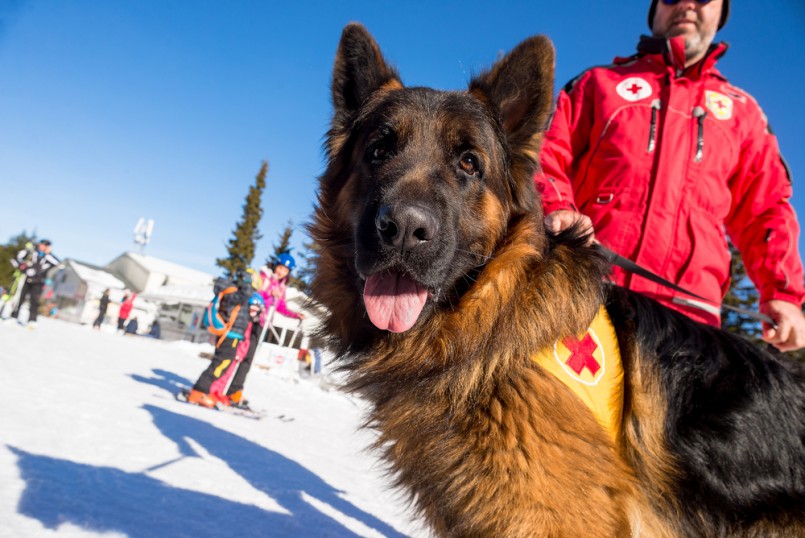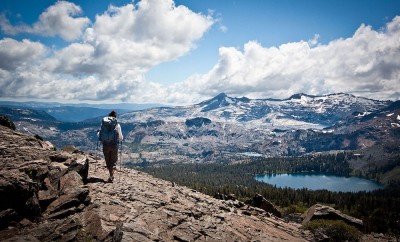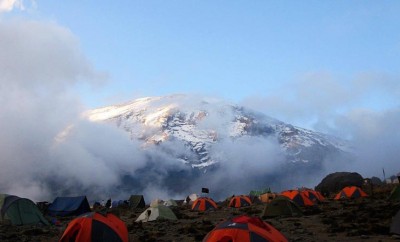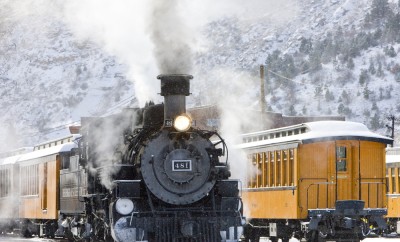Outdoors
What do avalanche rescue dogs actually do?
Imagine you are on a ski trip. Everything is going well: clear skies, perfect snow, no lines for the ski lift. It couldn’t get any better. When you’re making your way down the mountain, zipping across the snow, you hear a rumble behind you. Your worst fear is realized when you glance back and see a giant snowball of an avalanche coming straight toward you. Before you can think, before you can ski away from danger, the snow consumes you. What hope do you have now?
One solution is the avalanche rescue dogs. Rescue dogs go through extensive training to be able to locate humans buried in avalanches. In fact, they can search a 2.5 acre radius in thirty minutes—this feat would take twenty humans with probes about four hours to accomplish. When you’re stuck under several feet of snow, time is absolutely of the essence. Indeed, 90% of people can survive burial if found within fifteen minutes of submersion. Another fifteen minutes, and the percentage drops to just thirty. Every second counts.
Lucky for you, the avalanche rescue dogs know how to act fast. When they catch a whiff of human scent, they will stick their heads down in the snow to pinpoint the exact location. If the scent becomes stronger, the dog will begin digging. If the scent weakens, the dog will move on to another location. Because of this necessity, not every dog can become an avalanche rescue dog. Breeds most suited for the task include: German Shepherds, Golden Retrievers, and Labradors. These breeds are best because of their natural hunting instincts. They want to track down the scent they’re following. Herding dogs could also be trained, as herding is a form of hunting. Rescue dogs can begin their training as young as six months old.
Rescue dogs do not undergo training alone. It’s crucial to the process that the dog has a dedicated trainer, who will be committed to the dog succeeding. And it truly is a process. To begin, the dog will go through a year of puppy training with its handler. Then there is a year long gap until the second-year validation course. This gap allows the handler ample time to prepare the dog for validation, and provides plenty of one-on-one time between dog and handler. To get through the week of second-year validation, the dog will have to pass a series of tests: a human-scented object will be buried in snow and the dog will have to dig it out. As the week goes on, the object will be buried deeper into the ground, gradually increasing the difficulty for the dog. If the dog completes this course, the dog and handler will both undergo a “Senior Dog Handler” course. This involves roughing it in the backcountry of the mountains. Dog and handler alike will learn to survive overnight in the wilderness, track down false leads, or multiple burials. Also, they will learn how to work in groups, because sometimes a rescue mission may involve teamwork. This part of the course will show if the dog is capable of collaborating with its colleagues. Upon passing, a dog and its handler must be revalidated every year to remain active rescuers.
A Day In The Lives of Rescue Dogs
- Short obedience routine, followed by a protein-packed breakfast.
- Play fetch, to take the edge off.
- Get dressed in a bright orange vest. Possibly apply Vaseline to paws to prevent snow clumping.
- Take ski lift to the patrol headquarters and await an assignment. Perhaps play with other rescue dogs to pass the time.
- Training exercises: finding human-scented objects in the snow, and sometimes the handlers will bravely bury themselves to give the rescue dogs practice. The exercises can be made more complex by adding articles of clothing in different locations that still have a faint scent, when the dog is supposed to be finding the human. Or the handlers may call out and distract the dog from its mission. Sometimes, they even spill some gas to mimic the scent of a snowmobile and confuse the dog. The more experienced the dog, the harder the challenges.
- Journey back down the mountain for dinner. The dog may run behind the handler, who is riding the snow plow. Or they may opt to ride the ski lift back down, depending on how exhausted the dog is from training.
- Dinner is also high protein, and the dog may take a fish-oil supplement.
- Down time. The dog did good work today, and deserves to relax for the evening. Unless a night rescue is called for, the rescue dogs are done for the day.






0 comments